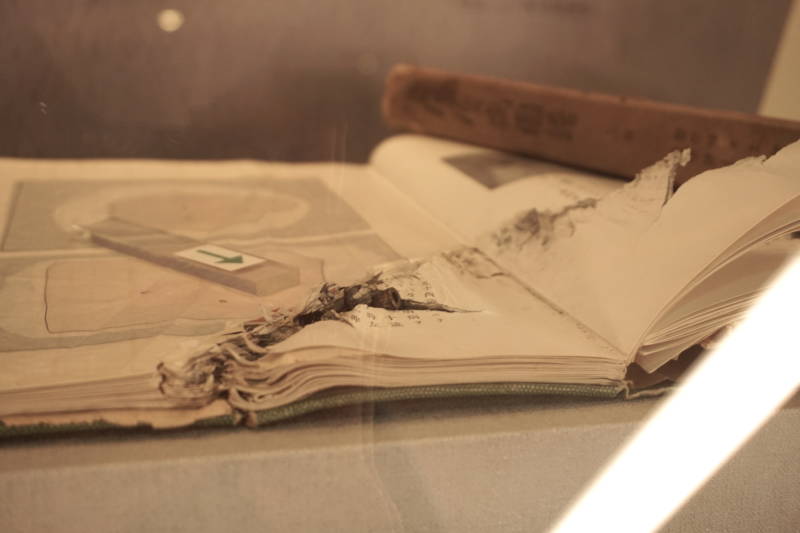【亞太博物館連線專欄】缺席與在場—台北228紀念館受難曲展示分析
Absent and Present: Analysis of the Meandering Exhibition in Taipei 228 Memorial Museum
缺席與在場—台北228紀念館受難曲展示分析
Absent and Present: Analysis of the Meandering Exhibition in Taipei 228 Memorial Museum
作者∕攝影:劉庭妤(國立臺灣藝術大學藝術管理與文化政策研究所碩士) 編輯:田偲妤
本文以台北228紀念館的受難曲展示為分析文本,提出博物館透過物件、相片,塑造亡者人格的觀點,彷彿意圖再次召喚逝者,對觀者訴說自身的死亡。觀者可由個體敘事出發,回頭觀看228事件的集體大敘事。然而,這之間的觀看必有其限制,提醒著有更多受難者在我們的記憶中一片空白。在尚未完成、留有缺憾的情境下,讓我們重新思考觀看傷痛的意義。
關鍵字:紀念館、觀看、人格面具、存在性癥、展覽敘事
This article uses the meandering exhibition in Taipei 228 Memorial Museum as the subject of textual analysis. Museums shape the deceased’s viewpoints through objects and photos, seemingly attempting to summon the dead and elaborate their own deaths to the audience. The audience can start from individual narratives and reflect on the collective narrative of February 28th Incident. However, there is bound to be a limit to the viewing between these two narratives. It reminds us that more victims blank in our memory. In such unfinished and regretful context, let’s rethink the purpose of traumatic viewing.
Keywords:Taipei 228 Memorial Museum、Persona、Being
228事件背景簡介
1945年二次大戰結束,日本投降,台灣改為國民政府接管統治。人民原本歡欣鼓舞地期望祖國的「接收」,沒想到卻成為「劫收」,新政府貪瀆嚴重、政治腐敗,導致物價飛漲、民不聊生,官民之間關係緊張,大大小小衝突不斷。1947年2月27日,林江邁查緝私菸事件成為最後一根稻草,民眾陳文溪在當時被誤殺,大眾因而憤怒地遊行抗議。當遊行隊伍來到行政長官公署前時,當時的行政首長陳儀,不但未處理事件,反而下令射殺群眾,導致更多傷亡。
事發後,民眾接著佔領了台灣廣播電台(即今日台北228紀念館),將消息透過放送擴及全台,引發各地的民眾支持,並成立228事件處理委員會,持續與陳儀談判溝通。陳儀一方面答應委員會的協議,卻私下通報蔣介石,並命情治人員潛入暗中破壞,至3月8日,228事件處理委員會正式宣告解散,21師軍隊自基隆港登陸,眾多人民在屠殺中身亡。
人權博物館的展示手法:以物件速寫亡者的輪廓
位於台北228紀念館二樓的受難曲專區,依照團體單位、職業領域,展示了數名受難菁英,包含:228事件處理委員會、三民主義青年團、台灣省政治建設協會、民意代表、新聞界、司法界、教育界、醫界,共八類。透過物件、文字,博物館速寫了亡者的輪廓,彷彿召喚死者前來,在觀者眼前展示自身的死亡。舉例來說,我們可以從王添灯的名片、碼錶,和四書、左傳等書籍(圖1),推測他的閱讀習慣、知識背景,還可藉由他慣性攜帶的碼錶,揣想王添灯演說時講究的性格;又或者,透過盧鈵欽被射殺時的衣著,口袋裡的紙鈔、遺書(圖2),看到228屠殺的斑斑血跡,以及與妻子告別的沉重哀慟。
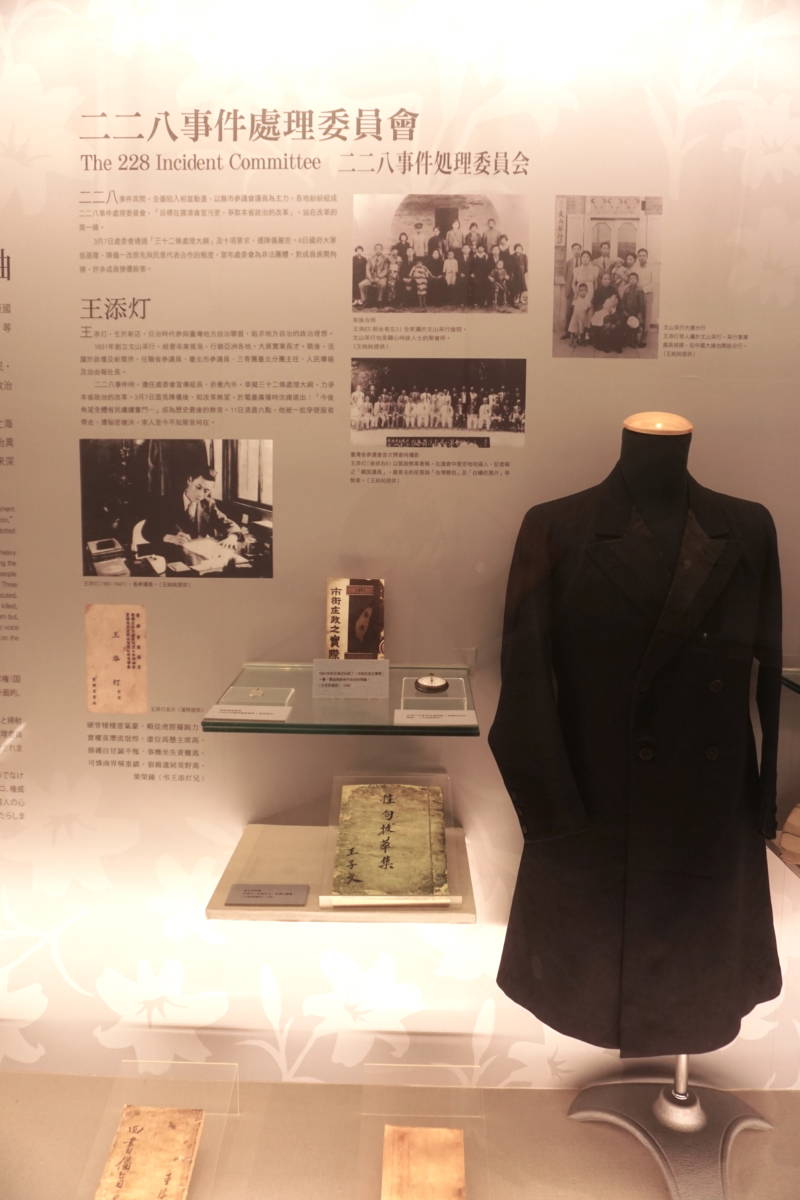
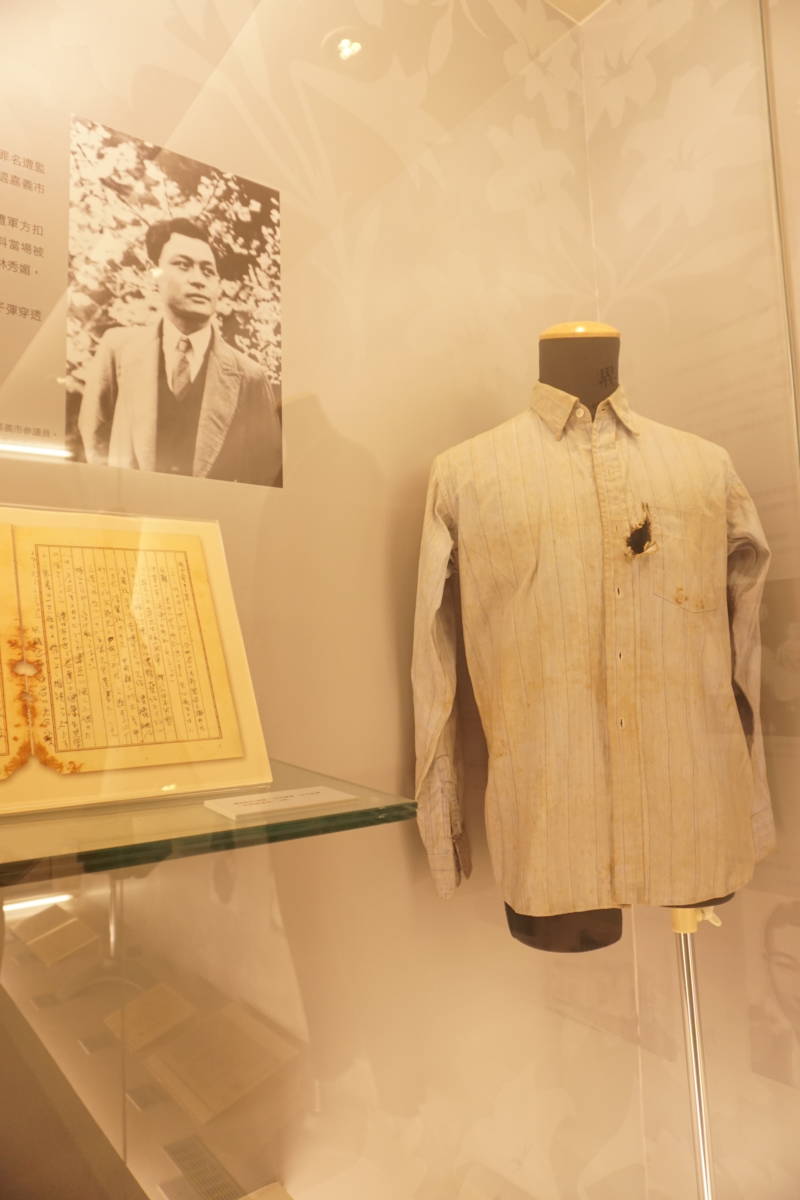
站立的衣架、日常用品、文件、相片⋯⋯博物館透過個人史的彰顯,在大敘事之外開啟了殊異的故事切面,彷彿受難者近在眼前,正緩緩地訴說著自身的受難歷史。然而,在參訪的過程中,除了沉浸在傷痛的氛圍裡之外,熟悉各類人權博物館的觀眾可能也會有如此思考:為什麼在人權博物館中,經常有這種小敘事的展示操作?觀看個人的故事,對於理解整體創傷事件的有何助益?再者,當逝者無法擁有自身死亡的解釋權,博物館為了什麼目的而詮釋他者的死亡?
展示受難者物件的原因:人格面具下的受難者群像
心理學家榮格在發展集體潛意識觀點時提到,集體潛意識透過「原型」(archetypes)烙印在我們的人格上,其中包含五種原型:人格面具、男性傾向、女性傾向、陰暗面、自我。這些原型經由知識系統、行為的反覆出現,成為人們天生的一種傾象,這之中,榮格所謂的「人格面具」(persona)意指主體在面對各個不同的公眾場合,使用不同的樣貌與之互動,如同演員,戴上不同的面具,以滿足各場域中的角色期待。「人格」在榮格的論述中,與「面具」被連結成一個複合名詞,藉此作為多面人格、社會角色的隱喻象徵,也點出了「面具」在社會中,常見的文化聯想。
228事件的受難者群體形象,亦可由人格面具此一概念解釋。受難者的物件,傳遞出特定訊息,讓觀者透過此側面想像亡者的人格特徵;又透過相片隱喻面具,使得受難者的肖像與展示物深刻地連結起來。博物館利用展示,裱框受難者的特定人格,藉此建構敘事;換言之,這些展示物件是被博物館挑選過的物件,用來展示受難者的專業形象(例如王育霖的檢察官服(圖3)、陳澄波的繪畫用具、施江南的聽診器零件(圖4));或是作為還原死亡場景的歷史見證物(好比郭守義的遺書、吳鴻麒慘死的遺像、盧鈵欽破洞的衣物等等)。受難者在博物館所呈現的物件、面具,是博物館意圖塑造的人格聯想:莊嚴、體面,卻無辜枉死,因而散落在這主要敘事中的日常物件,比如結婚照、勳章、手錶、印章⋯⋯,就像是為了搬演受難者的特殊性,而穿插其中的道具。總言之,藉由如同面具般的象徵性物件,博物館如同為受難者安裝魁儡線,使觀者藉由人格面具的聯想,揣摩受難情境。這種對於不同個體平板的角色塑造,其實正顯露死亡所造成的去個性化衝擊—死者再也沒有發語權,他們一同沉默、一同被展示,個體之間沒有差別,無法詮釋自身的人格特質,死亡與存有共同終結。
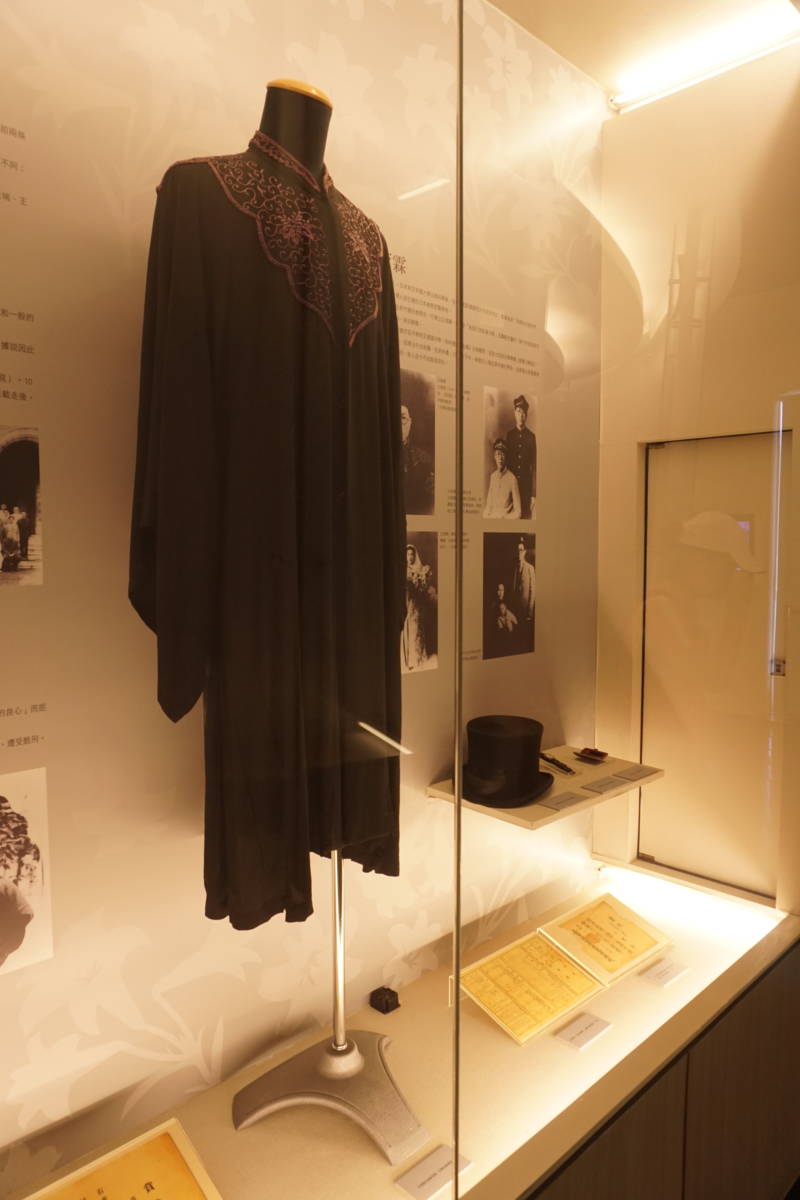
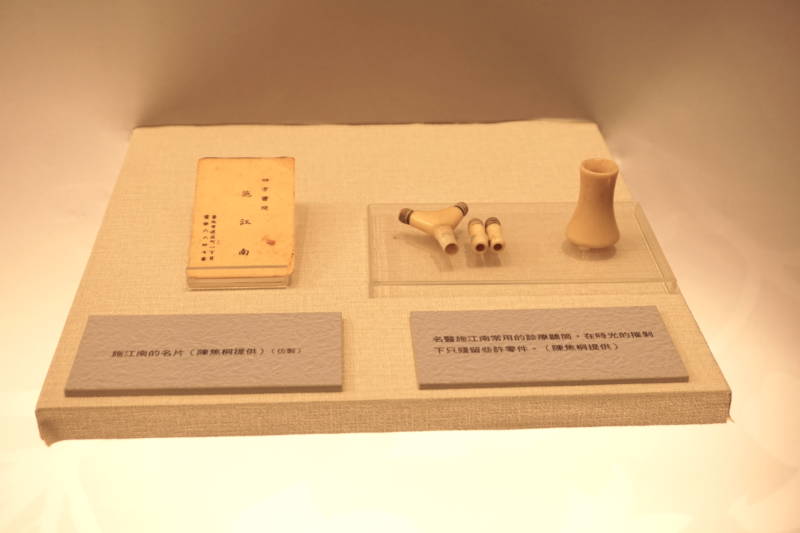
228事件造成的去個性化特質最是令人戰慄,所有的受難者僅存姓名,甚至連姓名都沒有留下便死亡。死亡的原因毫無邏輯可推判,眾多的人們彷如被丟進相同的竹簍中,同樣被歷史弭平,他們再也無法表達自身,縱使博物館盡力透過展示,使他們的形象再次鮮活起來,但終究有其限制,他們只能在片面且相同的劇幕中,反覆地說明自身的死亡。
有趣的是,為了彰顯這種去個性化的集體概念,博物館必須透過個性化的臉譜來完成故事的訴說。人類學學者波洛克提到,面具是身分的揭示,除了是象徵形式外,也常常被解釋為人格的集合,受難者臉譜在展示中,也擁有此面具性質,個體的行為、言論藉此有了具體的依託,因為人們相信人是人意義和行動的總代理者,身分又總是和自我、個別行為被聯想在一起。臉譜藉由特殊的身分成為圖像(icon),受難者的面容因而與228事件被聯想在一起,當談及此圖像時,大眾自然地聯想至228事件;談到228事件時,腦中亦順暢地浮現受難者圖像(圖5)。有別於集體模糊不清的概念形象,博物館必須透過臉譜的差異作為論述的引證,因為每張臉譜皆獨一無二,他們所揭示的身分暗示著事件遍及各個領域、家庭,呈現228事件擴及的廣大層面,以及備受牽連的諸多團體。回過頭來,我們因而能理解,博物館不得不使用看似矛盾的二元邏輯作為敘事手段—由個體劃分集體、以不沉默開展沉默,用可視指涉不可視—這不僅單純意指事物一體兩面的性質,更說明了觀者在離開博物館之後,有未竟的事物待完成,帶著不可能凝視的困境,持續思考228事件帶給我們的啟示和意義。
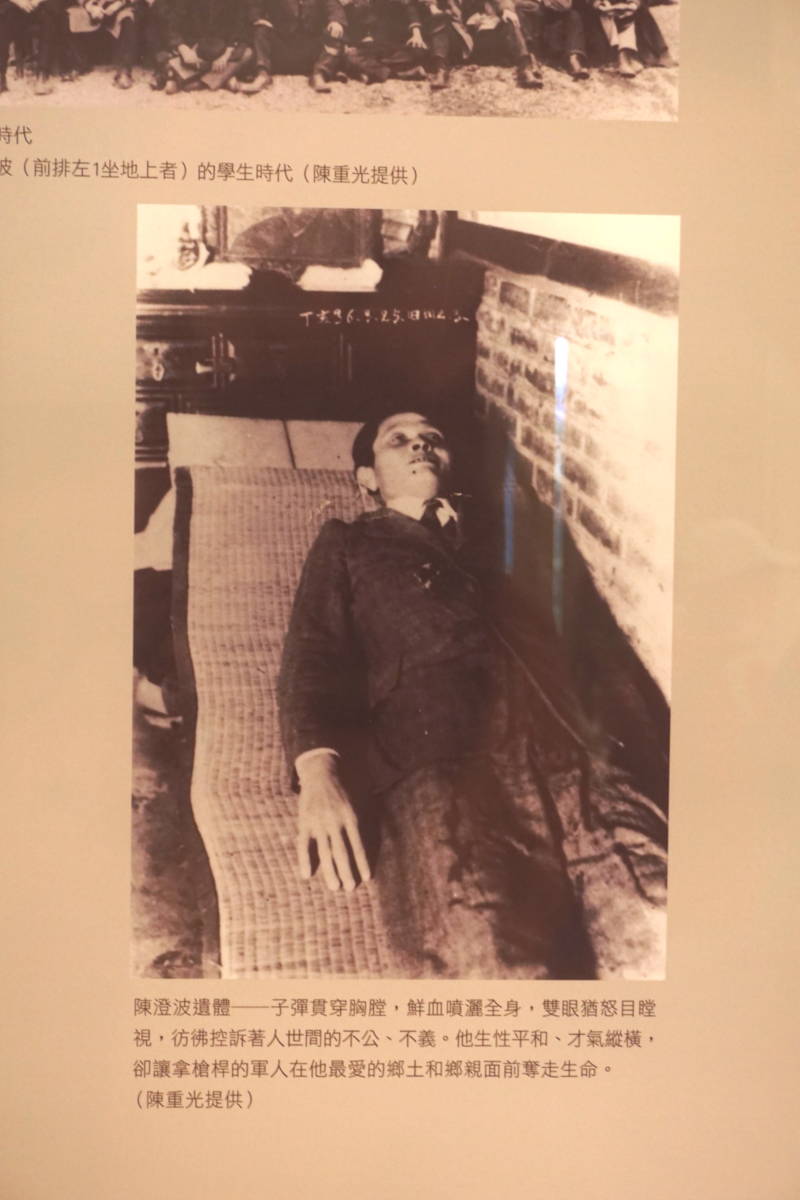
觀看傷痛的意義:喚醒主體的存在使命
「真理總是被遮蔽的」這是海德格提出的重要概念,主體的認知運動因而才能在遮蔽、去蔽兩者之間不斷徘徊,構成認識的基礎循環。「認識」是一種存在方式,是海德格提及的「存在性癥」(existentiale),在本文案例中,觀者在博物館裡對於受難者群像的觀看,即是透過「認識」思考存有/死亡之間的關係。
存有透過死亡而顯現,當人們意圖透過博物館提供的敘事,理解歷史的全貌時,總會發現,全盤的理解完全不可能,就算身在當時的時空背景之下,我們仍舊無法明白各個空間、時間的事件,以及人的情緒、思考。這也是說,當某些特定受難者的姓名被放在博物館中展示,這同時提醒我們,有更多曾存在的受難者,根本沒有得到進入歷史檔案的入場券,在人們的記憶中一片空白;或者,對於228紀念館展示櫥窗內的這些受難者而言,我們僅只能透過展板文字、影像、物件知曉片面資訊—這正是海德格所說的尚未完成、留有缺憾。無法理解他者的死亡,正是主體的缺憾,除了據此成為獲知意義的動力外,死亡也透過突出性、闖入性、固執性,加深了主體對於自身死亡的焦慮,自身存在的意義因而彰顯。換句話說,觀看人權博物館的意義,正是為了喚醒主體的存在使命而存在,除了重新思考他者的死亡外,更透過死亡焦慮的牽引,使得主體得以反思自身。透過此觀點的介入,博物館成功地拉近了觀者與客體間的距離,觀者將無法置他人生死於事外,因他人之死暗喻的是自身之死。我們也據此成為想像共同體中的其中一員,228事件的集體創傷文化,亦成為共同體中的想像來源之一。
Absent and Present: Analysis of the Meandering Exhibition in Taipei 228 Memorial Museum
Author: Ting-Yu Liu (Freelance writer, MA degree, Graduate School of Arts Management and Cultural Policy, NTUA) Editor: Sally Sz-Yu Tian
The background of the 228 incident
In 1945, after the end of World War II and the surrender of Japan, the ROC government began exercising jurisdiction over Taiwan. At that time, people were exultantly to anticipate a “fairy tale” in the beginning; however, it turned out to be a “nightmare” in the end. The new government had issues with serious bribery and corruption, causing inflation, destitution and intense vibe between authority and people. The last straw came on February 27, 1947; one of the protesters Chen Wen-Xi accidentally met gunfire by a clash between official investigator and the widow Lin Jiang-Mai who was suspected of selling contraband cigarettes. The crowd marched in anger and came to the Chief Executive’s office, Chen Yi, The Chief Executive of Taiwan Province, directly ordered to put down the crackdown with shooting and killing, leading to heavy casualties.
After the uprising, people occupied Taiwan Radio Station (Taipei 228 memorial museum today), and broadcasted the news to the whole island. Supported by local people, Taipei citizens established 228 Incident Settlement Committee to constantly negotiate with Chen Yi. Chen seemingly promised the agreement, but informed Chiang Kai-Shek about the incident secretly to call in agents and create chaos. The 228 Incident Settlement Committee was dismissed officially on March 8; later, Army’s 21st Division boarded from Keelung harbor and massacred Taiwanese people.
The presentation of human right museum: the silhouette of the dead against objects
The meandering exhibition on the second floor of Taipei 228 memorial museum displays several elite victims based on different groups and professionals divided into 8 categories including 228 Incident Settlement Committee, Three Principles of the People Youth League, Political Construction Association of Taiwan Province, elected representatives, the press, the law, the academic and the medical. Through the objects and words, it seems that we had known them and summon the deceased to show their death in front of the viewers. Take Wang Tian-Deng for example, we can speculate his reading habits and background through his business cards, stopwatch, Chinese classic books like Four Books and Zuo Zhuan etc. and even imagine his meticulous personality while speaking from the stopwatch he usually brought with. Besides, by viewing Lu Bing-Qin’s belonging of the clothes after shooting, cash and suicide note in the pocket, we read the blood of the 228 incident and the heavy grief when saying farewell with his wife.
Standing clothes-hangers, daily necessities, paper and pictures…etc., the museum offers you a different, personal history beyond the incident, as if the victims were standing before you and slowly telling you their own story of what they have been through. However, in addition to taking in the depression, people that are familiar with other human right museum may think: why do human right museums always choose to show these little narratives to people? How do they help us to understand the pain of those who were hurt in the 228 incident? Even more, when the deceased cannot explain their deaths, for what purpose does the museum interpret the death of others?
The reason of displaying objects: images of the victims under persona
According to Carl Jung, human collective unconscious is populated by “archetypes”, including the persona, the anima, the animus, the shadow and self. These archetypes has become a natural tendency by the repetitive appearance of knowledge system and behavior; among them, the persona means individuals create different personality and identity while interacting with others, like actor/actress wearing different masks to live up to expectation from people. In Jung’s theory, “Personality” is connected with “Mask” as a compound none, which is a metaphor of multidimensional personality and society roles and relates with the common cultural association of “Mask” in society.
Hence, we can explain the image of victims in the 228 incident with the concept of persona. The objects of the victims send out certain messages, allowing the viewers to understand the characteristics of the deceased. By placing the pictures of the victims aside, the picture acts as a “mask” and allows viewers to directly link the victim with their persona. The museum demonstrates specific personalities of the victims to make their narration; in other words, these items are selected carefully to show you the professional image of victims (such as the court dress of Wang Yu-Lin, the painting tool of Chen Cheng-Po and the stethoscope parts of Shi Jiang-Nan) or historical items to recall the scene (like the suicide notes of Guo Shou-Yi, the portrait of Wu Hong-Qi’s tragic death, the broken clothes of Lu Bing-Qin etc.) Being Dignified, decent but lifeless innocently, these are the associations created by those common items of wedding pictures, medals, watches and seal etc., which also thrives on more of the individuality of the victims. In short, the museum gets strings to hold victims and make viewers to figure out what the victims have encountered by persona; however, it’s exactly the moment that erases who they were. They all are displayed in silent and there are no differences between individuals; they do not exist in this world any more.
The most horrifying fact is that most victims died with only their name left or even nothing at all. The cause of death is vague and eliminated through time. Even though the museum tried its best to make them as lively as possible again, there is always a gap. The victims have no opportunity to express themselves in person anymore, but can only be observed through small fractions of what’s left of them in this world.
Interestingly, the museum uses individual “faces” to complete the story of each victims, but the whole presentation actually achieved a de-individuality concept. Anthropologist Maurice Bloch once mentioned that the masks reveal the identities of the individuals, which is considered the combination of personality more than symbolic form and the individual’s speech and behavior are embedded in the portrait of one. The visages of victims are associated pairly with the 228 incident, and the faces with special identities have become the icons, which are thought of naturally while talking the 228 incident and vice versa. Different from the blurred concept of the whole, the museum expounds through the uniqueness of faces revealing the identities covering every field, family and the group relatively. Therefore, we now can get the idea that the museum has to use this seemingly incompatible way which makes a unity with identical individuals, spreading out the silence with sounds, and indicate the invisible with multiple scenes. It doesn’t just simply resemble a situation with two sides to the story, but allows the audience to continuously think about the meaning and significance of the 228 incident after seeing the exhibition.
The reason to look at the scars: awaken the duty of being
Heidegger said “The truth is always hidden under a veil”, the cognition is moving around between the veiled and the unveiled, making a basic cycle of recognition. “Recognition" is a way of being, the “existentiale” mentioned by Heidegger, allowing viewers thinking the relationship of death and existence after watching the display in this case.
When people intend to go through history, they will find out that it is impossible to get the full story by the items in the museum alone. Even if we had lived in those times, it would be difficult for one individual to know about every incident that happened in other areas and the feeling others had been through. This also reminds us that there are more victims that have no chance to tell their stories in the museum and has just disappeared quietly from this world. Also, we only have access to partial information of the victims via their words, videos and items, leaving the whole picture unfinished and with regretful emotions. The purpose of walking into the human right museum is to be conscious of the value of your own existence and to introspect by the anxiety for being ignorant about death of others. From this point of view, the museum has successfully connected the living and the dead; the viewers cannot neglect the pain anymore. They are US and We are Them as a whole.
參考文獻 References:
- Pollock, Donald. Masks and the Semiotics of Identity. The Journal of the Royal Anthropological Institute, 1(3), 581-597.
- 陳榮華(2006)。海德格存有與時間闡釋。國立台灣大學出版中心:國立台灣大學。
- 陳榮成(譯)(1991)。被出賣的台灣(原作者:George Kerr)。台北市:前衛出版社。(原著出版年:1965)
- 車先蕙、李璨如、帥文慧、陳正文、劉南琦(譯)(1997)。人格理論(原作者:D. Schultz & S. E. Schultz)。台北市:揚智文化(原著出版年:1994)。

